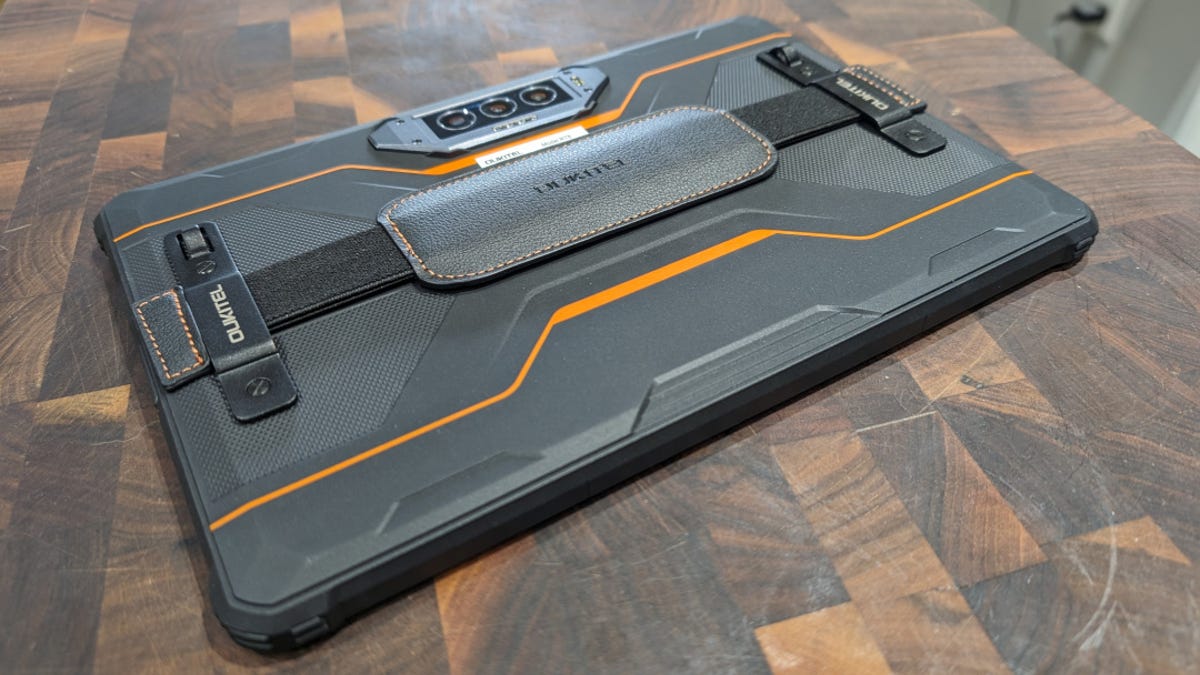This ultra-tough Android tablet can handle drop, bumps, and long hours on the job

ZDNET’s key takeaways
- The Oukitel RT8 tablet is available now for $359.99
- With an unbeatable battery life, a bright display that can be used in any light, and decent performance, this cost-effective tablet should be on everyone’s list.
- It’s heavy, and it contains a number of apps you’ll probably want to delete.
Let me set the stage for this. I received the Oukitel RT8 tablet over a month ago. As soon as it arrived, I unboxed it, set it up, charged it, used it for a bit, and then set it aside. Because the release date was fairly far off from the day I received it (and I had other devices to review), using the tablet had to get a low priority.
Last weekend, when I pulled the RT8 out of the box, I assumed I was going to have to charge it again before giving it another go before the review. Imagine my surprise when the battery was still at 47% — after a month of being in a box.
Also: I prefer this Lenovo tablet over the iPad for watching movies, plus it’s $80 off
I know, I know… the tablet was on standby mode so the battery drainage was understandably low. But I have other tablets that are lucky to last a week on standby. One particular Android tablet I use for my teleprompter never fails to drain to 0% if I leave it on standby for a week.
And then there’s this Oukitel RT8 that can go a month on standby and still have nearly half its charge remaining. If battery life is a key factor for you, that should make you take notice.
The specs
The Oukitel isn’t just about the battery. The full specs for this tablet are:
- 20,000mAh battery with UN38.3 / MSDS / Air Freight / Maritime Transport certifications
- 11-inch 2K display with Corning Gorilla Glass 5 with 500 nits brightness
- CPU – MediaTek Helio G99, 6 nm (Antutu score of up to 430,000)
- GPU – ARM Mali-G57 MC2
- 6GB of physical RAM with 256 GB of storage
- Quad Cameras – 32 MP front, 48 MP main, 20 MP night vision, 5MP macro
- Hardware certifications – CE(IEC62133 / ROHS / SAR) / FCC, IP68, IP69K, MIL-STD-810H
- IP68 rating (up to 1.5 m in water for up to 30 minutes)
- Rated for temperatures from -49 degrees F to 167 degrees F.
- Includes a removable stand and hand strap
- Weight – 996.7 g
- Dual SIM support
- Connectivity – Support WIFI 5,802.11 a/b/g/n/ac (2.4G+5G), Bluetooth BT5.1
My experience
I’ve tested other Oukitel (such as the OT5 tablet and the WP33 phone) and have always found them to be rock-solid devices that are capable of taking a serious beating while performing like champs. They may not include flagship CPUs, but the performance never fails to impress. The RT8 falls into this same category and doesn’t disappoint.
Of course, for me, the big selling point is the battery life, which is spectacular on a level I’ve not seen from a tablet. Beyond the battery, the next thing that impressed me about this tablet was the display, which is bright and crisp in any lighting. Even in the afternoon sun on a bright spring day, I had no problem viewing the screen.
Also: I use this budget Android tablet more than my iPad Pro – and why you probably would, too
To see how the tablet would perform, I installed Gemini (Google’s AI-powered replacement for Assistant) and it didn’t miss a beat. Even with a non-flagship CPU, the RT8 is perfectly capable of processing text and image-based tasks. I’d place this CPU just under the Snapdragon 695, which means it shouldn’t have any problem running games with a fairly smooth frame rate.
The only caveat could be the limited RAM (12 total by way of 6 physical and 6 virtual). Out of the box, the RT8 only uses the physical RAM, which I used for the first few days of testing. I then enabled the Memory Expansion option (found in Settings) and saw a noticeable difference in performance. This option is only recommended if you have plenty of internal storage space. I wouldn’t advise enabling this feature if you’ve used up more than 80% of the internal storage. But then again, your mileage may vary.
Another interesting option, DuraSpeed, claims to boost foreground app performance by restricting background apps and (possibly) postponing notifications. That feature is enabled by default and you can enable certain apps to continue running in the background (if they need to).
You won’t find a better-attached tablet stand on the market.
Jack Wallen/ZDNET
Finally, one of the aspects of this tablet that I really appreciate is the included stand, which is seriously beefy. Once you stand this up, you’ll feel confident that it will not fall over. This beats the snot out of those folding covers that serve as stands that rarely hold up.
ZDNET’s buying advice
Of all the Android tablets I’ve tested over the years, the Oukitel RT8 has probably been the most impressive. Yes, it’s big and heavy. No, it might not be the fastest tablet on the market. No, it doesn’t support Android 14 (yet). However, between the battery life, the display, the above-average performance, and the low introductory price, the Oukitel RT8 is an outstanding device that could serve you well for some time, especially if you use such devices in less-than-ideal situations.

